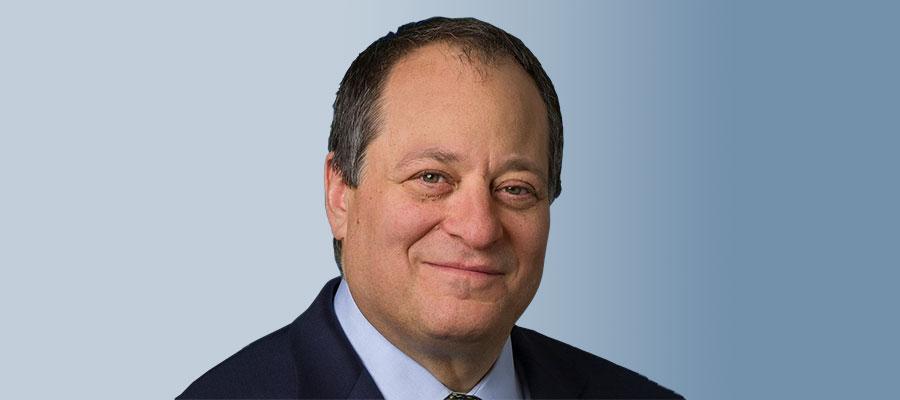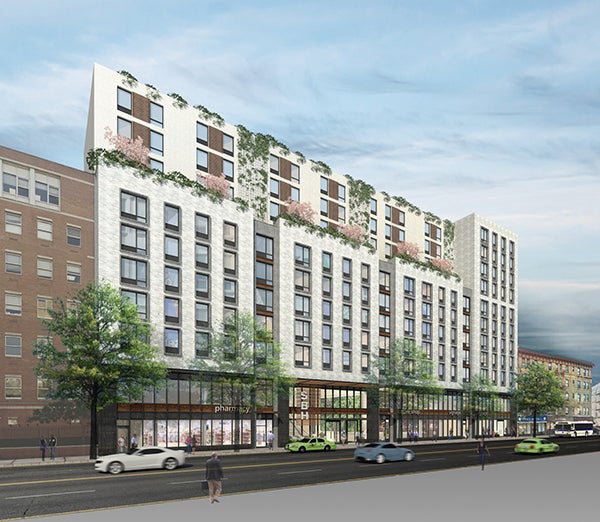Why SBH Health System addresses social needs: Because we must!

(Pictured above: David A. Perlstein, M.D.)
Why does a community hospital that cares for an underserved population – one with a challenging 95 percent government payer mix that results in significant annual net losses – choose to “break the mold” by reinvesting in its community and betting on social determinants to alter its destiny?
The answer is a simple one: because we must. The health and wellness of the community we serve depends on it.
SBH Health System, Bronx, N.Y., serves a low income and ethnically diverse population, one which often changes as immigration changes. Most of our patients are covered by Medicaid. The average income for a family of four is under $13,000 per year, way below the poverty level. Unemployment is high and educational levels low, as are the measures of health and wellness. The prevalence of obesity, asthma, diabetes and heart disease are the highest in New York City, as is the prevalence of substance abuse, non-accidental trauma and behavioral health diagnoses.
Bronx County ranks 62nd out of 62 New York State counties in terms of health and wellness, according to the 2018 Robert Wood Johnson Foundation County Health Rankings Report. But a significant investment in addressing the social determinants of health (SDOH) has begun to move the needle for our county.
As an “anchor institution,” SBH Health System is part of an urban microorganism. We know that by reinvesting in our community, as the community improves, so will our financials. Treat a wound on one part of the body, and the rest of the body heals with it. We view the chronic wounds associated with certain social determinants as an important part of the health care calculus. It is due to this knowledge that we decided to leap into the world of housing development, combined with programs aimed to address other unmet SDOH – food security, safe outdoor spaces, education, stress reduction, and health care coverage.
This commitment, we believe, will support the healing needed in our community and ultimately result in a healthier, happier and more productive population.
The Building Project
The project itself is a $156 million, mixed-use development that includes two affordable housing units with 314 apartments, managed by L&M Development Partners, and a 60,000 square-foot health and wellness space, managed by SBH.

Ninety-five units are being reserved for formerly homeless families and individuals, as well as those individuals identified as “high-utilizers” of the Medicaid system. Also planned is a daycare and early learning center, as well as other retail frontages dedicated to supporting a culture of wellness. The project also includes the creation of a multi-use community space, as well as an outdoor landscaped terrace with a walking track, a patient education center, and an integrative medicine space.
The project would never have gotten off the ground without the right partners, including L&M Development Partners and Hornig Capital Partners, community members, New York State, New York City, local and state elected officials, a receptive board of trustees and, of course, a visionary leader like my predecessor Dr. Scott Cooper, a pulmonologist, who had the courage and the vision to get the project started in the first place.
The Bronx Borough President’s office has dedicated $1 million to the build out of a rooftop garden, which will be used for educational purposes, as well as supplying produce for a seasonal green market to be housed in the lobby. The health and wellness space will include clinical programs such as urgent care, women’s and children’s health, as well as a fitness area and a teaching kitchen that will be used as an educational tool for providers and the community.

Some of the funding of the project was possible through tax-exempt bonds, low-interest housing loans by New York City, Medicaid Redesign funding, and the “donation” of the land by SBH in exchange for a long-term, lower-rate lease for the clinical space. The housing units are due to open in early 2019, and the wellness space in early 2020.
This and other projects focusing on SDOH could not have gotten off the ground without New York State’s Delivery System Reform Incentive Payment (DSRIP) program. DSRIP supports the state’s commitment to addressing rising Medicaid costs and variable quality outcomes by funding a five-year program to decrease unnecessary hospitalizations and emergency department visits. The program functions by creating a value-based payment system, and by encouraging community engagement and broad-based partnerships.
For example, SBH runs Bronx Partners for Healthy Communities (BPHC), a Performing Provider System funded through the DSRIP program. New York State has also granted $22.6 million in capital through the Facility Transformation Program to support the build out of the “wellness space.” These sorts of community partnerships have sometimes been overlooked by hospitals and health systems, but are vital to ensuring the success of our local transformation.
A Paradigm Shift
By addressing food and housing insecurity, and personal safety concerns, we will be better able to address the burden of untreated preventable illness in the community, which keeps people from maximal productivity and creativity. We recognize that through partnerships, we can begin to address the educational disparity and lack of career opportunities that pervade our area, with the ultimate goal of decreasing the intensity of those common urban stressors that inhibit personal growth and development. This creates the foundations for even more vibrant and resilient neighbors.
The challenge, of course, is that while value is an imperative in this new model, we still must maintain volume; after all, this is how we get paid. The fitness center needs to be able to pay for itself, and the teaching kitchen needs to be sustainable. But finding ways to pay for wellness services that current insurers do not automatically reimburse remain significant barriers. We are hopeful that as value-based care becomes the dominant model for reimbursement in New York State, both SBH and our community will be ahead of the curve and already on the road to improved health and wellness.
A project such as ours is not only the right thing to do, but it is a very good business to be in. We are in this for the long game. Our plan includes stewarding our community members towards independence and entrepreneurship, which will accrue to SBH for years to come.
Many urban health care organizations invest in their communities by purchasing homes and lots and building both residential and nonresidential units. However, the investments can sometimes have unintended consequences, such as gentrification and displacement. We believe that by giving our community the opportunity to address the social determinants often associated with lower education rates, worse health outcomes, and lower economic status, we will foster the growth of a revitalized community that is proud, productive, healthier and hopeful. We know our community deserves it, and we want to see this commitment and investment in other like-minded communities.
How will we determine success? We are looking at improving measures of wellness among our patients, including both qualitative and quantitative elements such as decreased hospital admissions, fewer unnecessary ED visits and of course, moving Bronx County out of that dreaded 62nd position in New York State, according to the 2018 RWJF County Health Rankings Report. We are also hoping that we can decrease the necessity to “push” wellness on our community — and benefit from activist patients and community members who begin to “own” their health and wellness — so that a true partnership is created and the impact is not only sustained but continues to improve.
We believe that our project can be truly transformational. We won’t know for sure of course for another five to ten years, but vision requires looking forward and a willingness to take a leap.
Editor's note: The programs led by David Perlstein, M.D., and SBH Health System are excellent examples of the value members of the AHA Physician Alliance are creating for their communities. Perlstein serves on the steering committee for the Alliance, a professional home for physician and administrative leadership to transform health care together. For more information on the Alliance, visit www.aha.org/physicians.

